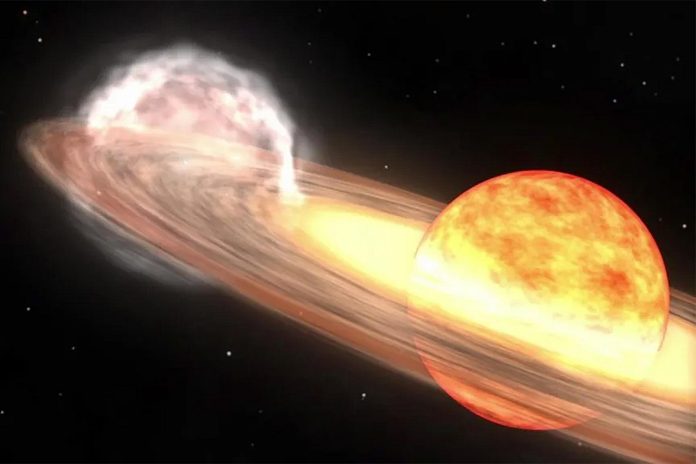
Skywatchers might soon witness a rare celestial event: the potential flare-up of T Corona Borealis, commonly known as the “blaze star.”
This star, located in the small constellation Corona Borealis, or the “Northern Crown,” could become visible to the naked eye for the first time in about 80 years.
To find T Corona Borealis, look for the Big Dipper. Follow the handle’s three stars to the bright star Arcturus, and nearby, you’ll see the half-circle shape of the Northern Crown.
T Corona Borealis is close to the constellation’s brightest star.
T Corona Borealis is actually two stars orbiting each other—a red giant star and a white dwarf, which is the dead core of a former star.
According to Ed Murphy, a professor of astronomy at the University of Virginia, the red giant has expanded so much that its outer layers are being pulled onto the dense white dwarf.
As the white dwarf collects hydrogen from the red giant, the hydrogen heats up and eventually ignites, causing a massive burst of brightness.
“When the hydrogen on the white dwarf undergoes nuclear fusion, it ignites all at once, creating a flare-up that can last from a few days to a week,” Murphy explains.
This phenomenon was first observed in 1866 and again in 1946, when the star flared and briefly became visible to astronomers.
Since then, T Corona Borealis has been quiet, but recent signs have sparked speculation about another flare-up. In 2023, the light from the star dimmed, leading some astronomers to predict it might flare again in 2024.
However, Murphy is cautious. “We’ve only seen it flare twice before, and we don’t know if the dimming is directly related to a nova,” he said.
“Just because there were 80 years between the previous two flare-ups doesn’t mean it’s on an exact schedule. It could take 70 years, or it might take 100 years.”
One challenge in predicting the flare-up is the star’s distance. T Corona Borealis is about 2,500 to 3,000 light years away, meaning we see light from the star that originated thousands of years ago.
“What we’re seeing now could have happened long ago, and we won’t see any new flares until the light from those events reaches Earth,” Murphy explains.
Despite the uncertainty, the blaze star still holds valuable lessons for astronomers. “These two stars were born together and have lived their lives together,” Murphy says.
“The more massive one became a white dwarf, and now its companion is dying and has turned into a red giant. Eventually, the red giant will become a white dwarf as well.”
While it’s unclear if and when T Corona Borealis will flare again, skywatchers may want to keep an eye on this unique star, as it could offer a spectacular show.
Written by Matt Kelly, University of Virginia.



